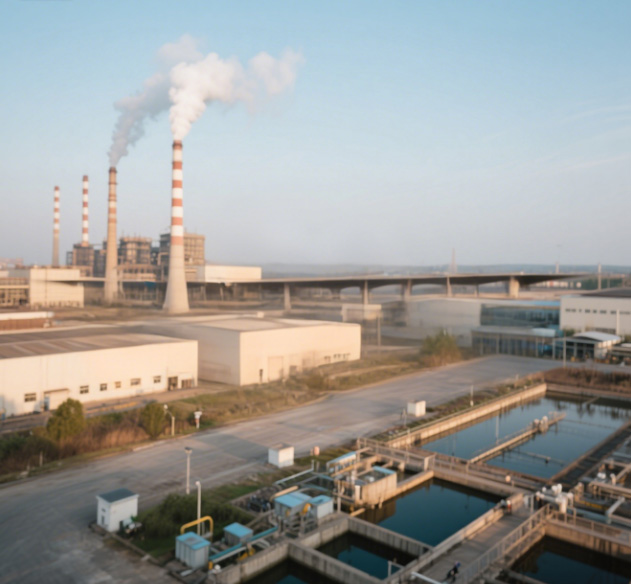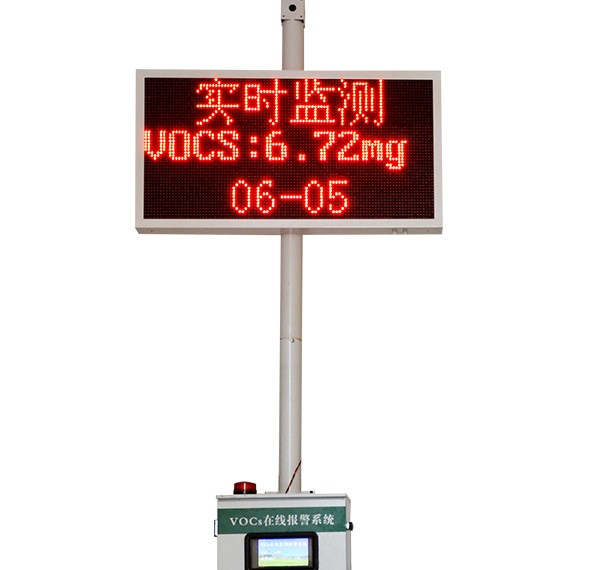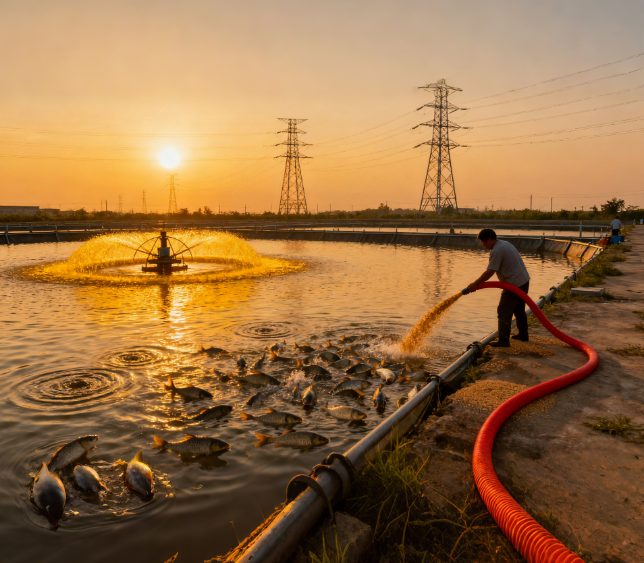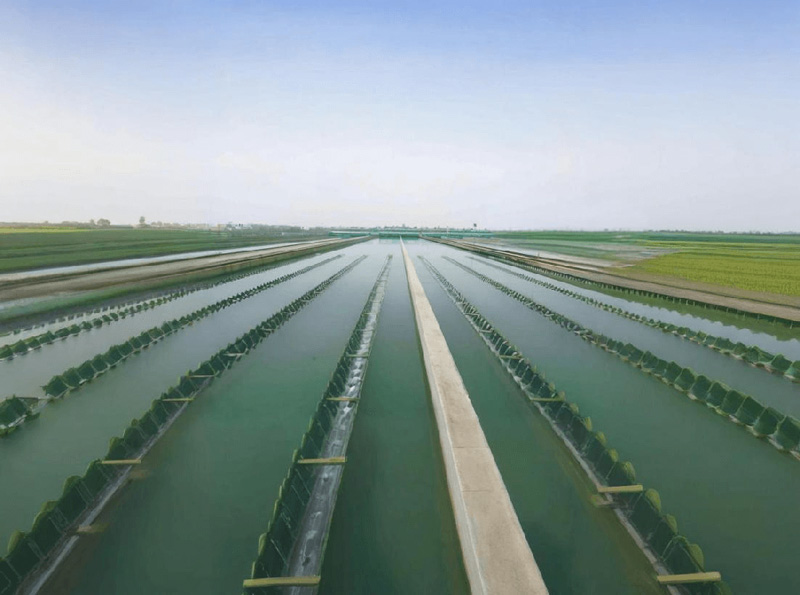Monitoring of Pollution Sources in Industrial Parks: A Compliant Application Plan from Online Monitoring to Emergency Response
With the rapid development of industrialization, industrial parks, as the core areas of industrial agglomeration, have increasingly highlighted environmental management issues. Volatile organic compounds (VOCs) emissions and dust particle pollution in the air not only threaten the health of surrounding residents, but also have an undeniable impact on the ecological environment. To effectively address this challenge, the compliant application of environmental monitoring instruments in industrial parks is particularly important.

As key equipment in current industrial park environmental monitoring, the accuracy and reliability of the Lanende VOCs online monitoring instrument and handheld dust particle counter are directly related to the authenticity and effectiveness of environmental monitoring data. However, the compliant application of equipment not only involves equipment selection and installation, but also covers multiple aspects such as environmental acceptance standards and regular calibration specifications. Only by ensuring strict adherence to these links can the scientific and authoritative nature of monitoring data be guaranteed, providing strong support for environmental management in industrial parks.
The purpose of this plan is to elaborate on the environmental acceptance standards and regular calibration specifications of the Lanende VOCs online monitoring instrument and handheld dust particle counter, in order to provide guidance for the compliant application of environmental monitoring instruments in industrial parks. Through the implementation of this plan, we hope to promote the standardization and normalization of environmental monitoring in industrial parks, thereby enhancing the environmental management level of industrial parks and contributing to the construction of a green and sustainable industrial development environment.

1、Environmental acceptance standards and regular calibration specifications for Lanende VOCs online monitoring instrument
1. Installation location and operating environment requirements
According to the "Technical Specification for Continuous Monitoring of Non Methane Total Hydrocarbons in Fixed Pollution Source Exhaust Gas" (HJ 1286-2023), the Lanende VOCs online monitoring instrument should be installed downstream of the fixed pollution source emission control equipment and upstream of the comparison monitoring section. Vertical pipe sections and negative pressure areas in the flue should be prioritized, avoiding flue bends, areas with sharp changes in the section, and water droplet interference areas. Waterproof low-voltage distribution boxes should be installed in the installation area, equipped with leakage protectors and 10A sockets to ensure stable power supply. If the exhaust gas flow rate is lower than 5m/s, the installation position needs to be adjusted or the sampling system needs to be optimized.
2. Environmental acceptance standards
Data collection requirements: During acceptance, data must be collected continuously for 3 days, and at least 9 sets of valid data pairs (5 sets for flow rate, smoke temperature, humidity, and 9 sets for non methane total hydrocarbons) must be obtained daily. All data must be recorded and reported.
Analysis cycle: The system analysis cycle should be ≤ 3 minutes, meeting the requirements of HJ 1013-2018 standard.
Backblowing device: A regular automatic blowback device is required to prevent particulate matter from blocking the sampling components.
Acceptance process: After installation and debugging are completed, a qualified third-party organization is commissioned to conduct comparative monitoring and issue a qualified report before online operation can be carried out.
3. Regular calibration standards
Daily calibration:
Instruments with automatic calibration function need to calibrate the zero point and range every 24 hours; Instruments without automatic calibration function need to be calibrated every 7 days.
Check the consistency of the discoloration silicone gel of the hydrogen generator every week (if the discoloration exceeds 2/3, it needs to be replaced), the temperature of the hydrocarbon removal device (≥ 350 ℃), and the peak time.
Check the airtightness of the combustion gas pipeline, filter and sampling pipeline for ash accumulation every month.
System wide calibration: Conduct a system wide calibration every 3 months, including zero drift, range drift, indication error, and system response time detection.
Key component replacement: After replacing the main components such as chromatography column and quantitative ring, multi-point calibration needs to be performed again.

2、Environmental acceptance standards and regular calibration specifications for handheld dust particle counters
1. Requirements for calibration environment and standard instruments
Environmental conditions: temperature 20-25 ℃, humidity<60% RH, cleanliness ≥ ISO level 8, avoiding strong electromagnetic interference and airflow fluctuations.
Standard equipment: NASCA standard particle generators (PSL or DEHS aerosols), adjustable flow calibrators, temperature and humidity compensators, etc. are required.
Calibration cycle: generally not exceeding 1 year, shortened to 6 months for high-frequency use or harsh environments.
2. Calibration process
Background noise test: Use a 0.1 μ m high-efficiency filter to seal the air inlet, take 10 consecutive samples, record the number of particles>0.3 μ m, and the ideal value is ≤ 10 particles/m ³.
Flow calibration: The sampling flow deviation should be ≤ ± 5%, and the laminar flow method or volume displacement method should be used for verification.
Particle size response curve calibration: Test the signal intensity of standard particles at 0.3 μ m, 0.5 μ m, 1 μ m, and 5 μ m, and correct the sensitivity coefficients of each channel.
Linear correlation test: Dilute high concentration standard aerosols in a 10 fold gradient and compare the linear correlation between measured values and theoretical values (R ²>0.99).
Repeatability test: 10 consecutive samples with concentration repeatability ≤ 10% FS.
Testing of particle size distribution error and particle concentration indication error: Using 0.5 μ m and 5 μ m particles for testing, the particle size distribution error is ≤± 30%, and the particle concentration indication error is ≤± 30% FS.
3. Special scenario calibration
Bioaerosol mode: Use fluorescently labeled spores (such as Bacillus subtilis var. niger), configure UV excitation light source and fluorescence detector, adjust PMT gain to signal-to-noise ratio>50:1.
Adaptability to high temperature environment: Run continuously for 8 hours in an environment of 40-60 ℃, detect zero drift (<5%/℃) every 15 minutes, and verify the effectiveness of the temperature compensation algorithm.
3、Compliance application guarantee measures
Institutional construction: Establish systems for use and maintenance, regular calibration, equipment failure prevention and disposal, and improve operational management records.
Personnel training: Provide professional training to operation and maintenance personnel to ensure they master the calibration process and operating standards.
Data management: All calibration data must be recorded and saved to ensure traceability and meet the regulatory requirements of environmental protection departments.
Third party supervision: Regularly commission qualified third-party organizations to conduct calibration and comparative monitoring to ensure that equipment performance meets standards.
The compliant application of Lanende VOCs online monitoring instrument and handheld dust particle counter must strictly follow relevant technical specifications, and standardized operations are required from installation location, acceptance standards to regular calibration. By establishing a sound operation and maintenance management system and personnel training system, the accuracy and reliability of monitoring data are ensured, providing scientific basis for environmental management in industrial parks.

 +86 19353291814
+86 19353291814



